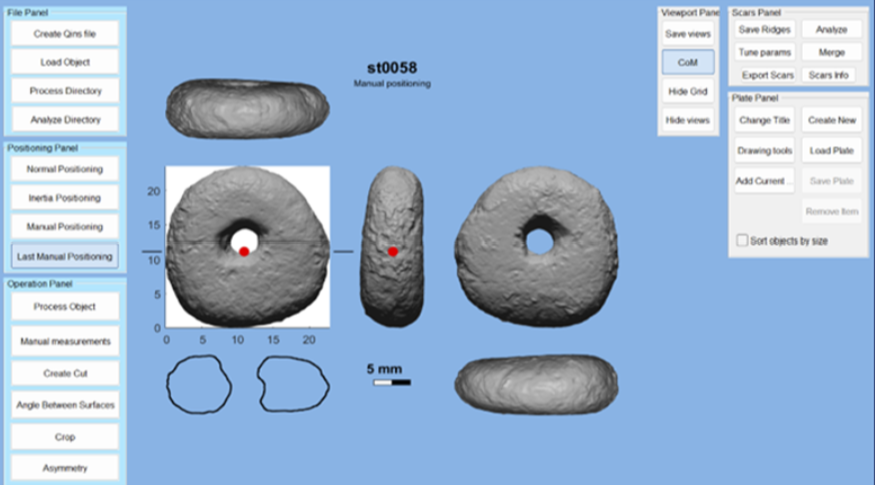
November 14, 2024 — Researchers from the Hebrew University of Jerusalem Computational Archaeology Laboratory have identified 12,000-year-old spindle whorls ─ early stone tools used to spin fibers into yarn ─ at the Nahal-Ein Gev II dig site in northern Israel.
This finding, reported in PLOS ONE, provides the earliest evidence of wheeled rotational technology in the Levant, a region along the eastern Mediterranean shores that roughly corresponds to modern-day Israel, Jordan, Lebanon, and Syria. It offers key insights into the technological advancements of the prehistoric Natufian culture there during their important transition to an agricultural lifestyle.
These 12,000-year-old spindle whorls predate the existence of previously known textile tools by 4,000 years, highlighting an important stage in human innovation. Spindle whorls are round, weighted objects, attached to a spindle stick, that form a wheel-and-axle-like device that helps the spindle rotate faster and longer so it can efficiently gather up fibers such as wool or flax and spin them into yarn.
According to Hebrew University Prof. Grosman, “These Natufian perforated stones are actually the first wheels in form and function. They are round objects with a hole in the center connected to a rotating axle, used long before the appearance of the wheel for transportation purposes. This early use paved the way for future wheel-based rotational innovations ─ key advancements that revolutionized human technological history such as the potter’s wheel and the cartwheel.”
The Hebrew University researchers used an innovative method they developed for studying perforated objects, based on digital 3-D models of the stones and their negative holes, to study more than a hundred of the mostly-limestone pebbles they found at the dig site. They deduced that the stones were likely used as spindle whorls — a hypothesis also supported by successfully spinning flax using replicas of the stones.
The Nahal Ein Gev II site, with its permanent structures, lime-plastered burials, and diversified tools, provides a rare glimpse into the end of the Natufian culture and the transition from a hunter-gatherer society to an agricultural one. The new findings underscore how important technological innovations were for driving the advancement of Neolithization processes.
“This study expands our understanding of technological innovation and showcases how advanced research tools can reveal insights into prehistoric craftsmanship,” says Prof. Grosman. “The work we are doing in the Computational Archaeology Laboratory continues to underscore humanity’s enduring drive for innovation.”
The research paper, titled “12,000-year-old spindle whorls and the innovation of wheeled rotational technologies” is now available in PLOS and can be accessed here.
Researchers:
Talia Yashuv, Prof. Leore Grosman
Institutions:
1) The Computational Archaeology Laboratory, Institute of Archaeology, The Hebrew University of Jerusalem
Pictures and video can be found here.




